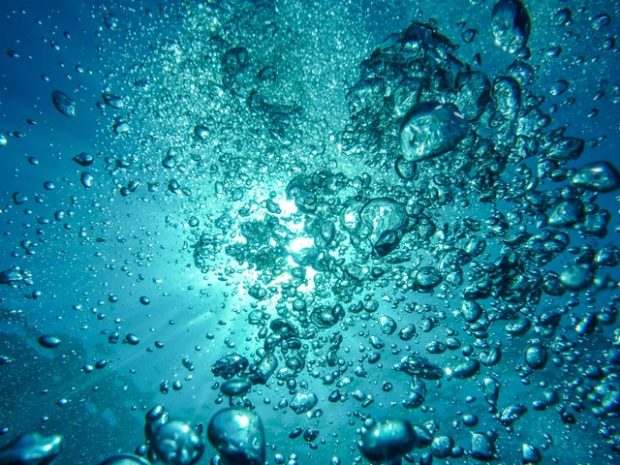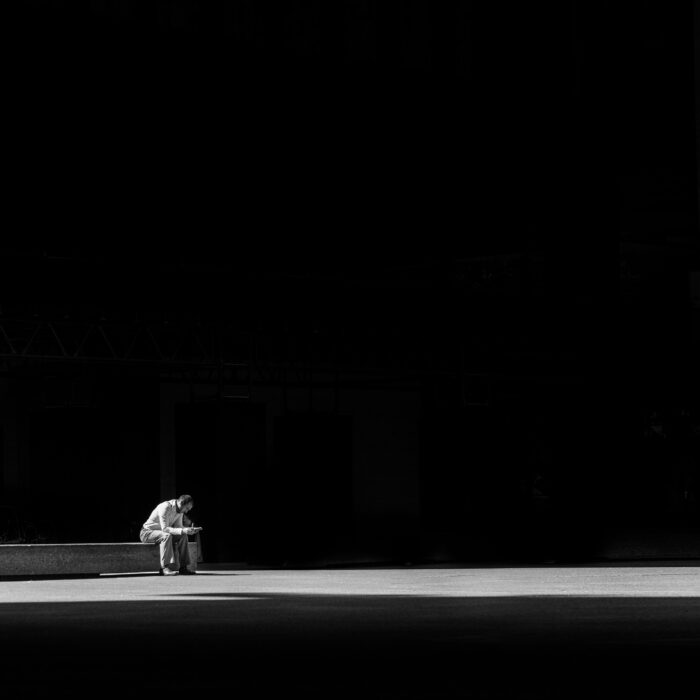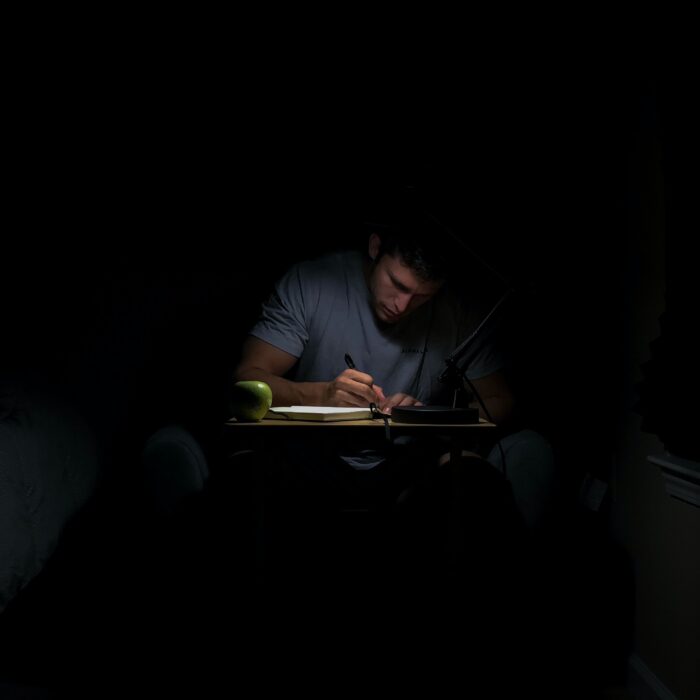You have no items in your cart. Want to get some nice things?
Go shopping
The springs were Florida cold springs, cold like ice water clear in a glass. Aquamarine or turquoise water you could see straight through, to the bottom, where mossy fingers of tape grass waved in slow motion at the sun. Beneath the surface, we could open our eyes and see in all directions. Spot gar or bluegill or redbreast sunfish swimming past. The water refracting in just the right way to provide everyone 20/20 vision in that pool.
Manatees lived there, too. Their image was familiar, printed on rusty license plates on pickup trucks all over town. Talisman of the springs. They were called sea cows, after their closest land relation. They were thought to be mermaids, because of their curled piscine tails. Legend warned of siren songs that could lure us further into the deep. To me, they were simply hump-backed walruses, somersaulting through quietest space.
We were children in charge of children that summer. Day camp counsellors, nine to four, at the YMCA. When the concrete pool in town got too hot, or choked with chlorine, we’d load our charges on to the bus. We’d drive down dirt roads and highways to parks, buried deep inside the interior. Past dark, mosquito-thick woods where along some sandy shore – some miracle rupture in vegetation – we’d find them, those springs, waiting for us, as they had for all time. An eternity.
The springs were fantastic, mythical pools. Hearing of them, the story goes, the Spanish explorer Ponce de Leon sailed from Cuba around the peninsula’s foot to search for the Fountain of Youth. Through thicket and shrub, he slaughtered or enslaved natives. Gold, not water, was the real reason for his quest. In later years, he was pierced in our state by a poison-tipped arrow, shot from a Calusa Indian’s righteous bow. He lived long enough to sail home to Cuba, but died there, casualty of the springs.
The campers didn’t need a fountain. They had youth in spades. Find them there in the water. Sitting on a rock that can’t grow moss except where it breaches the surface to touch the sun. They lay down, their bodies bent in the middle, at just the spot where the water rushed past. A cool water-flow across their stomachs. But first, they had to brave the chill, getting in. The springs were unbelievably cold in the hot Florida sun. Some, like Blue Hole Springs, were just 64 degrees. In such cases, we had to coerce the kids to step inside, all the while, standing on the shore ourselves, unable to move.
On the banks, Spanish moss hung in hazy ribbons from live oak trees. Sometimes it hid snakes, grey or green or the colour of smoke, that could easily fall from the limb and into the stream rushing past as you bathed.
At Rock Springs, there was a freshwater run. It started at the top of an outcrop of rocks, the outer skin of a tunnel buried deep inside. People would swim the cavern, explore the caves, all the while suspecting they were in too far. Then, one day a boy drowned. It was near impossible to get his body out. After that, they blocked the mouth of the cave with a wrought-iron gate, like the kind in old pirate movies that protects a treasure. But the gate couldn’t block the water, which bubbled out unbound from inside, making a flume. To ride it, we rented inner tubes, from alongside the road to the park, $5 an hour. Ten for all day. They were impossible to carry or fit in a car. Fat rubber swells that smelled of old tires.
The shale and limestone were slippery around the cave, and the trick was we had to both balance and fall in at the same time. That is, we had to fall in a controlled way, not a slippage, which could lead to disaster. The water beneath the shale was deep. Teenage boys would drink a couple, and dare each other to jump from the top of the cave into this narrow, breathing hole. Ten years before, one had misjudged. His head hit the rock and the vertebrae in his neck splintered in two. He didn’t die. But he never could walk or move again. We knew this when we stood at the mouth of that hole. We told ourselves, be careful. We told the kids, don’t run. Don’t accidentally slip and fall in.
But to ride we had to fall. We threw the black tube into the water. Then jumped backwards into what we hoped was the dead centre of the ring. If we did it just right, the tube absorbed our fall, cushioning the blow. Right away, the water took over, moving us fast down the run. Water waits for no one. Current is a nonnegotiable force.
We would float, hands kicking out over the tube, doing our best to guide our rafts down the water. But the truth was, we were at the mercy of the tide. The spring would push us to its fringes: hedges of wild rice stalk, eel grass, or pond weeds, that concealed huge snapping turtles or ten foot gators, that lie in wait, ready to bite, drag and drown. You can’t tell a gator until you see the bubbles coming up from his nose. That would most likely be too late.
When our rings would drift towards these edges, we’d flail and fight in all directions, struggling to steer as fast as we could, far away. Our screams echoed up through the high branches to the deep blue sky up above, blue as the water. We doubled the sounds of birds screeching overhead, until it was impossible to tell the difference echoing around in the trees.
The spring’s run emptied out into an open pond, wide like a lake. A coating of slime covered the stairs as we tried to climb out, all so we could walk back to the cave and do the whole thing again. Paddle hard to avoid those dangers.
Alexander was another springs. Turquoise blue and white sands. In the middle of the pool, the bottom suddenly dropped out. One minute we were maybe a foot or two from the bottom. The next, we hung above a cavernous space, a hundred foot drop to the floor. If gravity visited these springs, we’d fall in. Be smashed to bits. But water granted weightlessness. Water offered reprieve. We were astronauts floating there in cerulean space.
Folks would scuba dive this hole. Into the caves at the bottom. They’d pass the kids slapping water close to shore. They’d enter with the seriousness of a military team. Black scuba skin pulled up over their limbs. Flippers. Mask. Tank. I’d see them dip their face briefly beneath the water. Blow air up through their tubes. Sometimes, they’d spit into their masks, and clear it with a finger. Then they’d open their mouth, bite the regulator and
drop
below the surface.
We’d never see them come back up again.
The names of the springs were like poems. Someone had named them with love. Big Blue. Big Grotto. Cedar Head. Copper. Emerald. Devil’s Ear. Some kept their indian names. These had their own garbled music, sung of sunken vowels. Ichetucknee. Suwanacoochee. Chassahowitzka. The Seminoles once roamed these lands. Drank and bathed in these fresh waters. Their language echoed where their civilisation no longer did.
Today I remember these sounds: children, laugh/screaming, splashing in the wild; the spring, rushing; the crickets or birds, singing shrill songs in the woods; the earth and land, silent. Sunshine shattered through the tops of bald cypress. It broke in a thousand pieces on our heads and the water.
Each Thursday, we steered our kids on to the yellow bus. Sat down on warm evergreen seats that soon grew sticky from the heat. We’d do our best to open the windows. To push hard from both sides at once, breaking a sweat. Sometimes they’d stick half way down. Sometimes, they wouldn’t open at all. The bus would start up and move down the highway. To keep them busy, we’d sing a song, about Noah and the flood. We still believed the Bible could stem off all the world’s evils.
The water was coming and it was coming in high. We sang loud and strong, and we believed every word. But at the springs, the song was shed, forgotten. We threw it off like our unwanted clothes, the vestiges of civilisation. At the shore, we crept in. Pristine blue inching over our toes and legs. And bodies. We released the world. We swam out on our stomachs, hovering over great, perilous seas. We stared under water at caverns, grass, mineral gems. We lay there, arms spread, suspended and unmoving. All around us, life and death collapsed. And we’d float.
About Laura Jones
Laura Jones is a writer living in Ohio, USA. She is completing her MFA in Creative Nonfiction at Northwestern University, and in the fall will begin teaching writing at Central State University. In 2015, she won the AWP Journals Prize in Nonfiction at NU. Her work can be found in "Creative Nonfiction", "Fourth Genre", "About Place Journal", "The Gay and Lesbian Review", and the "Oklahoma Review". A collaborative work about growing up in the south, "Southlandia", will be published in the anthology THEY SAID in 2018.



